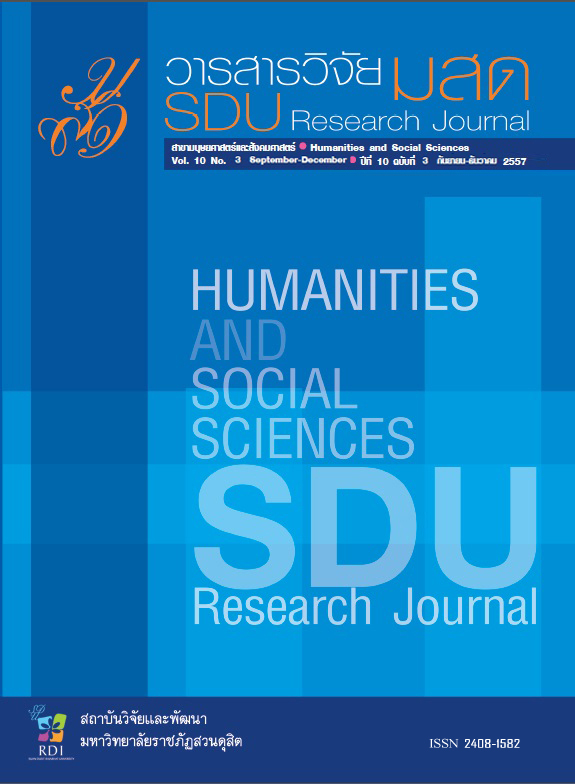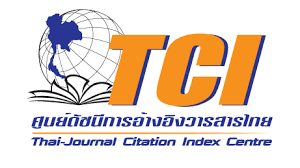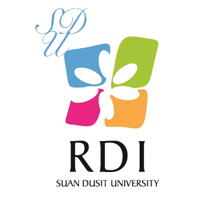การรับรู้การใช้คำปรากฎร่วมในภาษาอังกฤษของผู้เรียนไทย
Abstract
บทคัดย่อ
การวิจัยครั้งนี้มีวัตถุประสงค์เพื่อ (1) ศึกษาระดับความเชี่ยวชาญในการรับรู้และการสร้างคำปรากฏร่วมในภาษาอังกฤษของผู้เรียนไทย (2) ศึกษาระดับความเชี่ยวชาญในการสร้างคำปรากฏร่วมในสามรูปแบบคือ คำกริยา-คำนาม คำคุณศัพท์-คำนาม และคำนาม-คำนาม (3) ศึกษาความสัมพันธ์ของการรับรู้และการสร้างคำปรากฏร่วมในภาษาอังกฤษของผู้เรียนไทยและ (4) ศึกษานัยสำคัญของความแตกต่างในการสร้างคำปรากฏร่วมสามรูปแบบคือ คำกริยา-คำนาม คำคุณศัพท์-คำนาม และคำนาม-คำนาม กลุ่มตัวอย่างในการวิจัยครั้งนี้เป็นนักศึกษาชั้นปีที่สอง ปีการศึกษา 2555 มหาวิทยาลัยเทคโนโลยีราชมงคลแห่งหนึ่งจำนวน 104 คน โดยแบ่งออกเป็น 3 กลุ่มดังนี้ (1) นักศึกษาหลักสูตรนานาชาติ จำนวน 24 คน (2) นักศึกษาวิชาเอกภาษาอังกฤษเพื่อการสื่อสารสากลจำนวน 40 คนและ(3) นักศึกษาจากคณะอื่นที่ไม่ใช่วิชาเอกภาษาอังกฤษ จำนวน 40 คน เครื่องมือที่ใช้ในการวิจัยครั้งนี้ประกอบด้วย(1) แบบทดสอบวัดความเชี่ยวชาญในการรับรู้การใช้คำปรากฏร่วมในภาษาอังกฤษ (2) แบบทดสอบวัดความเชี่ยวชาญในการสร้างคำปรากฏร่วมในภาษาอังกฤษสามรูปแบบคือ คำกริยา-คำนาม คำคุณศัพท์-คำนาม และคำนาม-คำนาม และ(3) แบบสำรวจภูมิหลังและพฤติกรรมในการรับรู้ภาษาอังกฤษของนักศึกษา ผลการวิจัยสรุปได้ดังนี้ (1) นักศึกษาทำคะแนนแบบทดสอบวัดความเชี่ยวชาญในการสร้างคำปรากฏร่วมในภาษาอังกฤษได้ดีกว่าแบบทดสอบวัดความเชี่ยวชาญในการรับรู้คำปรากฏร่วมในภาษาอังกฤษ (2) นักศึกษาทำคะแนนแบบทดสอบวัดความเชี่ยวชาญในการสร้างคำปรากฏร่วมในภาษาอังกฤษชนิด คำนาม-คำนามได้ดีที่สุด (3) การรับรู้และการสร้างคำปรากฏร่วมในภาษาอังกฤษของนักศึกษามีความสัมพันธ์กันอย่างมีนัยสำคัญทางสถิติ (4) การสร้างคำปรากฏร่วมในภาษาอังกฤษทั้งสามรูปแบบของนักศึกษามีความแตกต่างอย่างมีนัยสำคัญทางสถิติ และ(4) ปัจจัยที่ส่งผลต่อการรับรู้และการสร้างคำปรากฏร่วมในภาษาอังกฤษของนักศึกษา ได้แก่ การแปลความจากภาษาแม่ไปยังภาษาที่สอง การใช้คำคล้ายหรือคำเหมือนในภาษาแม่ การขาดความรู้ด้านวัฒนธรรมและคำศัพท์เฉพาะด้าน และการใช้คำกริยา de-lexicalization
คำสำคัญ: คำปรากฎร่วมในภาษาอังกฤษ ผู้เรียนไทย
Abstract
The main purposes of this research were: (1) to investigate the levels of receptive and productive collocational proficiency among the three learning settings, (2) to investigate the proficiency of learners in producing each type of collocation; verb-noun, adjective-noun and noun-noun, (3) to investigate the correlation between receptive and productive collocational proficiency in the three learning settings, and (4) to investigate the significant differences between three types of productive collocations in the three learning settings. The sample groups in this study were divided into three learning settings; International College, English major and non-English major who were all second-year students during the 2012 academic year at Rajamangala University of Technology, TBP (a fictitious name). The research instruments were (1) the Receptive Collocational Proficiency Test which consisted of 50 items of several types of collocations in various categories in order to judge whether or not the bold word in each sentence is an appropriate collocation, (2) the Productive Collocational Proficiency Test which was designed to measure the knowledge level of the participants regarding the production of each type of collocation: verb-noun, adjective-noun and noun-noun and (3) the questionnaire was used to survey the background knowledge of the learners, the attitudes and the learning language habits.
The results showed that all of the participants did better on the productive collocational test than the receptive collocational test and the participants achieved the highest mean scores on noun-noun collocation. The correlation between receptive and productive collocational proficiency in the International College setting was a moderately positive significant correlation. In other words, there was a correlation at a low level of significance between the receptive and productive collocational proficiency of English and non-English majors. Clearly, non-English majors had a higher level of significant correlation than English majors. Moreover,there were significant and remarkable differences between verb-noun and adjective-noun collocations, verb-noun and noun-noun collocations, and adjective-noun and noun-noun collocations among the three learning settings. In addition, the collocational violations made when acquiring collocations consist of the approximate translation from L1 to L2, the use of synonym and a limited knowledge of restricted collocations, the limitation of collocational specialization and culturally specific collocations and the use of de-lexicalization.
Keywords: Basic collocations, Thai learners of English






